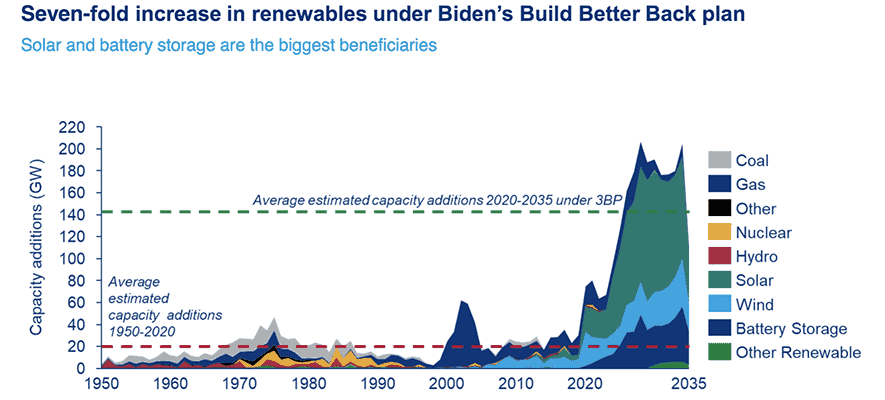Following the 2020 election, we break down the projected winner’s Build Back Better Plan that pledges to eliminate carbon pollution from power plants by 2035 and inject $2 trillion into the clean energy economy.

What is The Build Back Better Plan?
Joe Biden unveiled his Build Back Better Plan in July, marking it as a cornerstone for his campaign. The plan itself focuses on rebuilding America through four key areas:
- Mobilize American manufacturing and innovation to ensure that the future is made in America, and in all of America.
- Mobilize American ingenuity to build a modern infrastructure and an equitable, clean energy future.
- Mobilize American talent and heart to build a 21st century caregiving and education workforce which will help ease the burden of care for working parents, especially women.
- Mobilize across the board to advance racial equity in America.
Biden’s manifesto, regarding the sustainable infrastructure and clean energy sector, states: “Biden will make a $2 trillion accelerated investment, with a plan to deploy those resources over his first term, setting us on an irreversible course to meet the ambitious climate progress that science demands.“
How Will The Plan Impact The Renewable Energy Industry?
With Biden’s plan to inject $2 trillion into the industry, there are likely to be major changes to the sector. The plan “would significantly reduce the United States’ reliance on fossil fuels, and the 15-year timeline for a 100% clean electricity standard is far more ambitious than anything Biden has previously proposed,” states the Washington Post.
The Build Better Back Plan outlines a strong focus on generating American-made, clean, electricity. Within the plan, Biden outlines how he will “marshal an historic investment in energy efficiency, clean energy, electrical systems and line infrastructure that makes it easier to electrify transportation, and new battery storage and transmission infrastructure that will address bottlenecks and unlock America’s full clean energy potential – built by American workers, using American-made materials” in every state.
Investment of these levels will likely cause a surge in the need for renewable energy companies. Biden keenly emphasizes the use of American companies and American workers, so there is the potential for companies, such as EnergyLink, to benefit from his plan.
Reforms and Tax Incentives Under The Plan
- Biden released information regarding the extension of tax incentives that are known to generate energy efficiency and clean energy jobs.
- He intends to overhaul tax incentives to leverage private sector dollars to maximize investment into the clean energy revolution. By increasing incentives, Biden is able to draw on the investment of private firms, which will likely fast-track the process of reducing America’s reliance on fossil fuels and expanding clean energy infrastructure.
Alongside tax reforms, Biden intends to establish a technology-neutral Energy Efficiency and Clean Electricity Standard (EECES) for utilities and grid operators. The EECES would likely require utilities and grid operators to improve their energy efficiency by procuring electricity generated by clean energy resources. Electricity provided by wind, solar, energy storage, nuclear, hydropower and fossil energy with carbon capture technology would are expected to be favored by the plan. The diagram below, taken from Wood Mackenzie’s Solar Summit Report, outlines how the use of renewables might change.

Part of Biden’s plan is an aggressive approach towards reaching net-zero, thus it is expected that the EECES will set interim emissions reduction targets that provide for a phased-in approach to achieving net-zero emissions.
Challenges The Plan Could Face
While Biden’s manifesto outlines an impressive investment into the American economy, the potential exists for there to be challenges along the way. With promises of building significant amounts of new infrastructure, that will rely on clean energy, there is a risk that electricity prices will rise.
Another obstacle to circumvent will be ensuring new legislature pertaining to the cleaner energy plans gets passed. The easiest way for Biden to achieve this will be if the Democrats control both chambers of Congress.
The final challenge to consider will be the fiscal impact of the plan. A Biden administration will likely be concerned with the fiscal impact of potential new regulations, especially those that impact consumers, such as increased electricity prices. If these fiscal concerns materialize, they may become a significant barrier to new energy policy implementation.
Although the future is uncertain until December the 14th, what we do know at EnergyLink, is that we have extensive experience in the renewable energy industry. We encourage any business considering their energy needs to reach out to us and speak with a member of the team.






